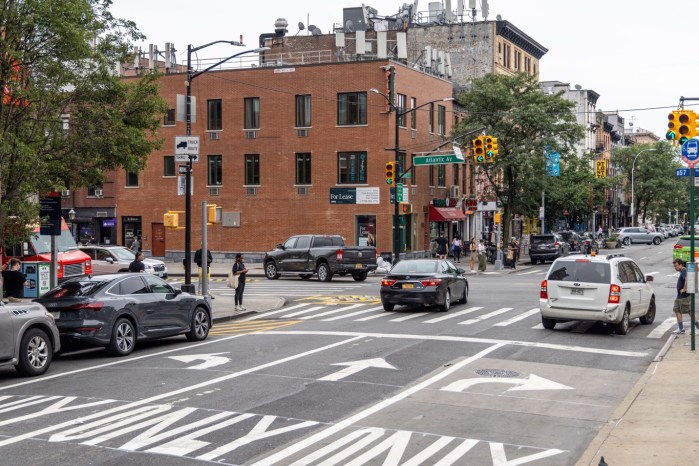Cops vastly outnumbered cyclists at Sunday’s “funeral procession” for the Bedford Avenue bike lane — but on Saturday, another crew of two-wheeling activists will be back, this time with some baring their breasts.
Cyclist Heather Loop said that she and at least 50 other bikers will ride in their underwear through the Hasidic portion of Williamsburg to protest Mayor Bloomberg’s removal of the lane — and she won’t be the only one doffing her top in response to reports that the neighborhood’s religious leaders pushed for the removal.
“If you can’t handle scantily clad women … live in a place where you can have your own sanctuary, like upstate,” said the 27-year-old Loop.
With public nudity laws on her side, Loop said she’d encourage other underwear-clad bikers to do the full Monty in a “freedom ride” from The Wreck Room near the corner of Bedford and Flushing avenues up to Division Street, the stretch that had a bike lane until earlier this month.
Such excitement will be a big change from Sunday’s rain-dampened protest.
All manner of NYPD vehicles rolled into place right on time at 2 pm, with officers outnumbering protesters by 15 to five on the Brooklyn side of the Williamsburg Bridge — the meeting place for the ride and rally.
The few cyclists who showed up scoffed at the NYPD’s show of force — as detectives took photos from unmarked vehicles and traffic cops sat at the ready in full riot gear.
Procession organizer Monica Hunker dodged the question of whether the group would try to repaint the lane again. “You can’t really paint in the rain,” she said. “I think we’re all prepared to get arrested.” (There were none on the day, however.)
The suggestion of guerilla tactics was about as far as it got, unless you count a small impromptu dance party at Wallabout Street and Bedford Avenue, the end of their memorial route, and a few soggy protesters holding signs reading, “We love bike lanes.”
But the message was clear: bike lanes are safe and environmentally friendly, and their removal doesn’t remove riders. Most protesters had one theory or another on the nature of the loss.
“It was a political deal,” said rider Geoff Zink. “The street is for everybody. The [Hasidic community] say the removal of the lane was for safety, but how does that make any sense? It’s a bike lane.”
Even within the insular Hasidic community of South Williamsburg there are deep divisions. Some Hasidic leaders claim that Spandex-clad cyclists slow down buses dropping off children at nearby religious schools, yet other Hasidim were said to have been involved in the repainting.
Few protesters believe that the city will restore the lane, so for now, they’re calling for a show of force.
“Get on your bike and ride — show the community that we do use and need all bike lanes,” said event organizer Barbara Ross.























